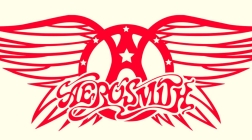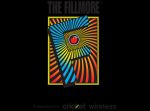Keeping the Legend of Michi-Cihualli alive

Michi-Cihualli is the Goddess of the Lake. She commands the wind and the waves and protects the Riberas, the lands around Lake Chapala. She is also a great reason for people to make music and dance and film and art. This weekend that all came together in the Festival of Michi in Ajijic, Mexico.
First, the legend.
The eruption of a volcano in 1113 drove a warrior tribe called the Mexica to migrate to the Chapala lagoon where they found the Cocoa, a pacifist tribe who they then enslaved. They also practiced human sacrifice, throwing babies into the hot springs around the Lake every May. Generations later in 1472 as the sacrifice began, the Lake began to rage as a huge, female deity emerged and commanded the winds and water to drive away the Mexica. Since then, her legend has continued in paintings, murals, songs, and dances, and to this day, she animates the environmental organizations that fight pollution and overdevelopment of the Lake.
This legend is kept alive with almost continual observation in the Riberas. – it is hard to go anywhere in the town of Ajijic without seeing Michi-Cihualli. This weekend, the Goddess of the Lake was celebrated for three days with experimental video, audio files, and rappers at the La Cochera Cultural – a cultural center and artist’s residence. Patty Green, a talented young director from the University of Guadalajara, joined with the team at the Cochera to create an experimental film on Michi-Cihualli and a documentary on the making of the film. The Cochera staff built a three-day festival of music, dance, and art around the film’s premiere.
The highlight of the festival, for me, was the live scoring of the film premier by an unusual band: Emelia Galvéz on a mixture of hand drums, rattles, and indigenous noisemakers, Eleazar Soto on a computer running sound files he had recorded over the past several months, Miguel Soto on the drums, and Juan Pi Medeles on violin and rattles.
The band worked with the filmmaker to write the score and had recorded much of the music in advance. The magic emerged as Eleazar Soto (who is also a world-class saxophonist) played each file in coordination with the frames of the film, and the other musicians wove their unique sounds with the film and the audio files. It was fascinating to watch Emelia Galvéz switch between large and small and drums, a digeridoo-like instrument, and rattles, coordinating live with other band members like free-form jazz – only it wasn’t, it was carefully composed.
The last night we were treated to a local children’s rap group, the San Sebastian Rappers (named for the San Sebastian neighborhood La Cochera Cultural is located in). They rapped their own lyrics in a set directed by Eleazar Soto. A legend dating from before the time of Columbus and the Conquistadors kept alive with audio files, a computer controller, a drum kit, and a violin, and passed on to the next generation with rap and dance…all keeping Michi-Cihualli alive.
(Painting of Micih-Cihualli by Antonio López el Seco; Parade float by Alejandro Camacho Barrero. Thanks to Jesús Victorian López Vega for the Legend of Michi-Cihualli ).



























